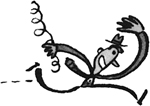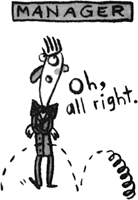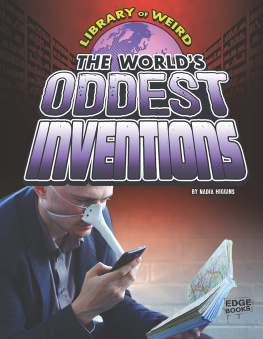Contents
Guide

The author and publisher have provided this e-book to you for your personal use only. You may not make this e-book publicly available in any way. Copyright infringement is against the law. If you believe the copy of this e-book you are reading infringes on the authors copyright, please notify the publisher at: us.macmillanusa.com/piracy.
CONTENTS
My thanks to Christy Ottaviano and Jane Jordan Browne for making this book possible; to my wife, Pamela, for her untiring love and support; to Christian Goodell for his invaluable research and assistance; and to Karl Ryden, Patricia Conwell, Kim Kmetz, and Jeff and Becky Zolot for their contributions to this book.
For Barbara and Bill with love
Play-Doh began as a product for cleaning wallpaper. The seesaw was first used as a prop in the bloody spectacle in the arenas of ancient Rome. Long ago there were kites so large that people could be flown on them. Behind every toy there is a story.
But some toys have far stranger stories than others. Only those toys that had the most surprising and unbelievable origins are found in this book.
Even though we know generally where and when a given toy was made, the chapters of this book are not in chronological order because there are all sorts of ways in which toys and their histories overlap. For example, tops have been around much longer than todays action figuresbut action figures are a type of doll, and dolls were invented thousands of years before tops. So, really, there is no way to put the history of toys into a simplified order.
In 1976, a time capsule was buried in Washington, D.C. Inside the capsule are dozens of toys from the last century. In 2076, exactly one hundred years later, it will be opened. People then will marvel at the wonderful jumble of toys and see how we lived, how we dressed, and what we believed. Just as we are now, they will be amused and surprised by the toys they find, and from them, try to better understand the past.
It was a mistake. A goof-up. An invention that didnt work. A flop; thats what the Slinky was, at least in the beginning.

In 1945, an engineer by the name of Richard James was hard at work in a Philadelphia shipyard. The U.S. Navy had hired him to invent a stabilizing device for its ships. When a ship is plowing through the waves at sea, it pitches and plunges and rocks every which way. And its navigational instruments do, too. Richards job was to come up with something that would counterbalance the instruments so that they would be level at all times.

Springs. Richard believed that some sort of arrangement of springs would do the trick. He tried all different types and sizes, and put them together in every conceivable way. For weeks he toiled, making dozens of different devices. But none of them worked. In fact, he never did come up with the item the Navy had hired him to invent.
But one day Richard accidentally knocked a large experimental spring off a shelf. It should have just plopped to the floor. Instead, it walked down. Crawled, really. Coil by coil, end over end, it descended onto a stack of books then down to a desktop down to a chair and from there to the floor, where it gathered itself back together.
He tried it again and again. Each time, the same thing happened.


As soon as the workday was over, Richard hurried home. Fascinated with the strange spring, he showed his wife, Betty, what it could do. Together, they tried it out in all sorts of ways and in all sorts of places. It was especially good at walking down stairs.
A toy.
Richard didnt think of it that way. Betty did. She was the one who realized that what her husband had invented was a terrific toy. Betty was also the one who named it.
At first, all sorts of names came to mind, but none seemed quite right. For the next two days she thumbed through a dictionary, keeping a list of some of the best possibilities. Finally, she came upon what she believed was the perfect word to describe the toy: slinky.


Early the next year, Betty and Richard James borrowed $500 to have four hundred Slinkys made. They went from store to store, trying to get the owners to stock them. A few did. But despite Slinkys wonderful ability to walk, it didnt move off the shelves. Not a single one was bought.
Richard and Betty were discouraged but not about to give up. Slinky was a supertoy, they were sure. And it would sellbut people needed to be shown what it could do.

They went to the manager of a large department store named Gimbels. It took a lot of talkingeven a little begging!but finally they convinced the manager to let them put on a demonstration. Fearing the worst, Richard slipped a dollar to a friend to make sure at least one Slinky would be sold. It turned out, though, that he had no need to worry. Shoppers stared in amazement as the steel coil gracefully walked down a sloped board. Within ninety minutes, the entire stock of four hundred had been sold.


Before long, Richard and Betty were able to start their own company. Within a few years, they were millionaires. As for Slinky, more than 352 million have been sold to date; Slinkys sales are as strong today as ever. In the world of toys, Slinky still walks that walkand shows no sign of slowing down.
* * *
The early Slinkys were made of blue-black Swedish steel. In the first year of production, this material was replaced with less expensive American metal.
The first Slinkys sold for $ 1 apiece.
There are about eighty feet of wire in a standard-size Slinky.
During the Vietnam War (early 1960s1975) the Slinky reverted to its original role. First intended for the military, Slinky the toy ended up on the battlefield. Carried by radiomen in the jungles of Vietnam, Slinkys were tossed over high tree branches as makeshift antennas.


















